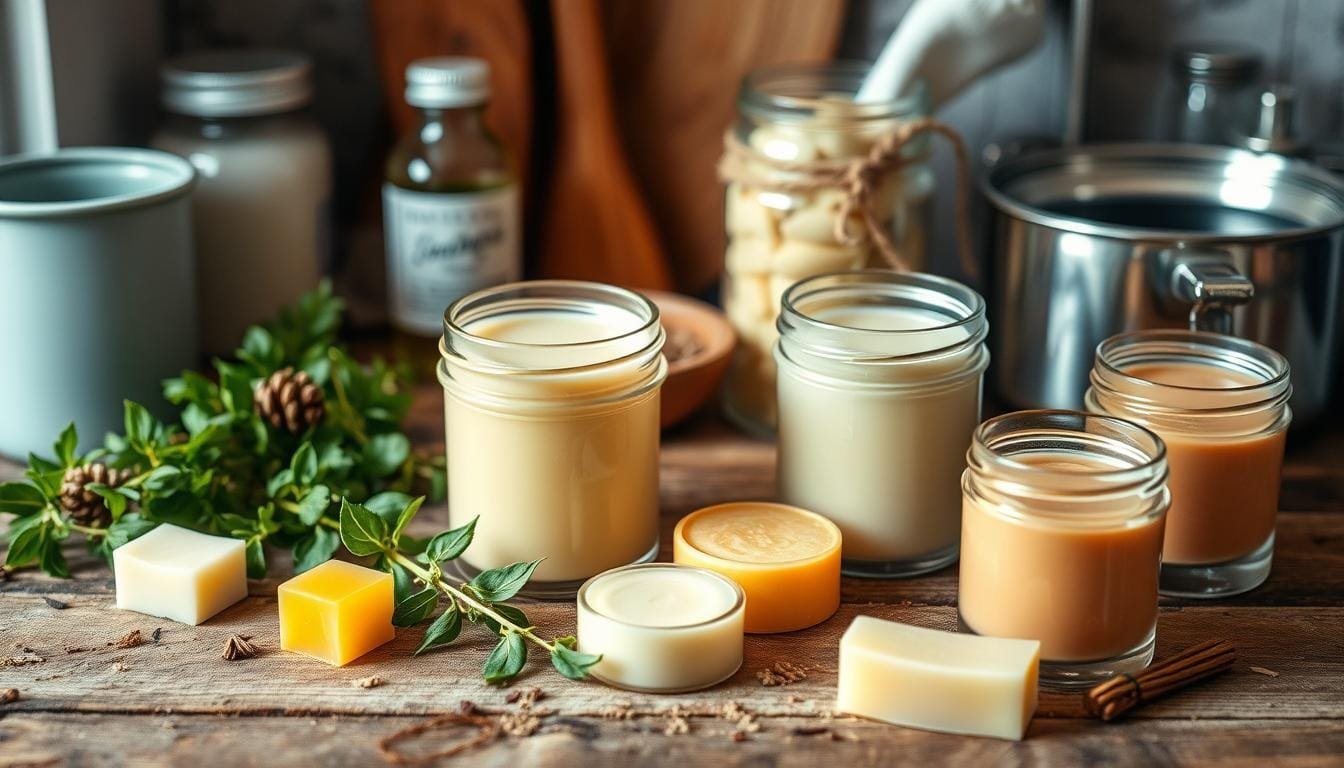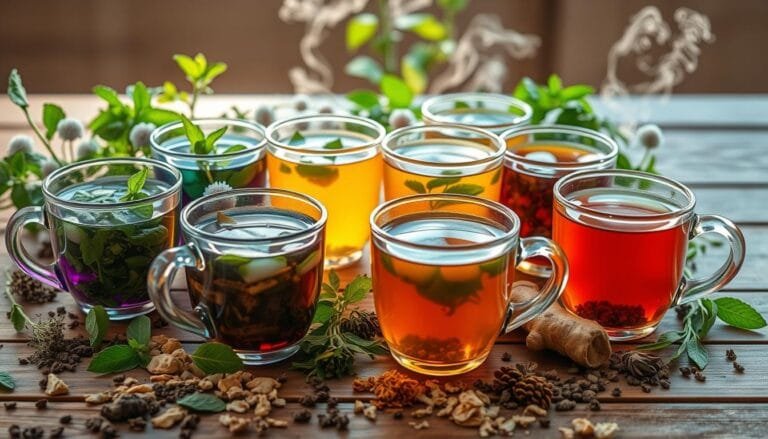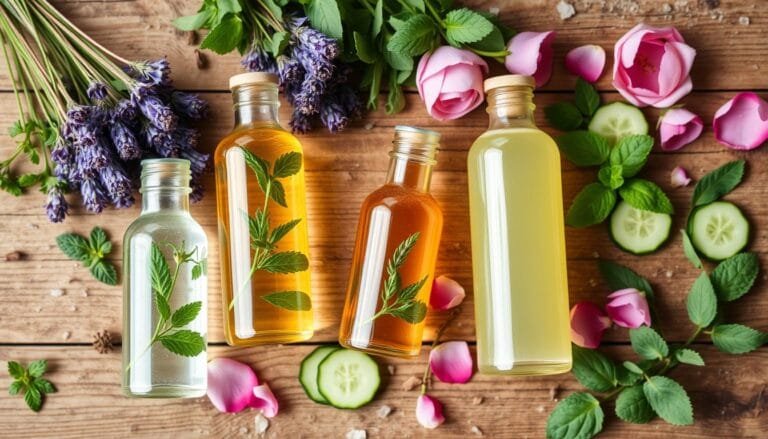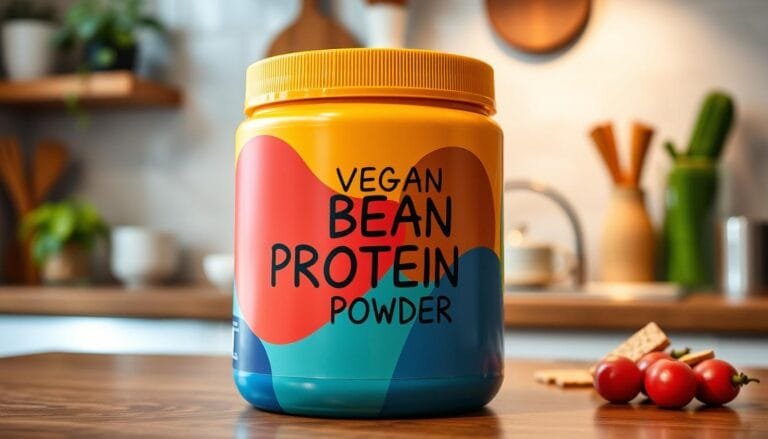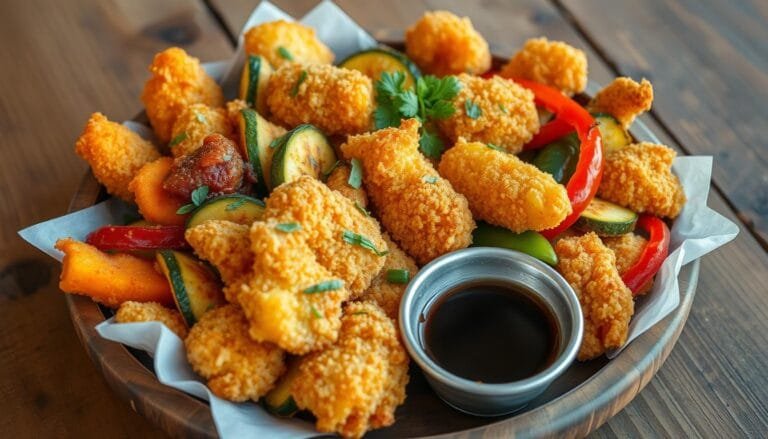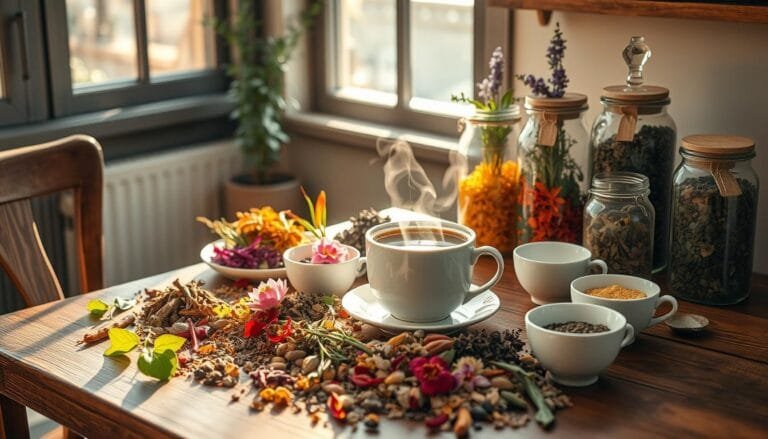I love making my own herbal lip balms. It’s a fun way to take care of my lips naturally. By making them myself, I know exactly what’s in them.
Creating these balms is easy and effective. It lets me use the best herbs for my lips. This way, I can keep my lips healthy and soft.
Want to save money or help the planet? Making your own lip balms is a great choice. It’s also a fun way to learn about herbs. In this article, I’ll show you how to make your own lip balms. You’ll learn about the best ingredients and how to use them.
Benefits of Making Your Own Natural Lip Balm
Making your own lip balm is more than just a fun DIY project. It lets you choose what goes into your lip care. This way, you can avoid harsh additives found in store-bought lip balms. Your lips will get the nourishment they need from organic ingredients.
Control Over Ingredients and Customization
With homemade lip balm, you pick every ingredient. This means you can tailor it to your skin’s needs. Whether you want more moisture, sun protection, or special healing properties, you can do it. You can mix and match oils, waxes, and herbs to make the perfect lip balm for you.
Cost-Effectiveness and Sustainability
Creating your own organic lip care saves money compared to buying it. Plus, it’s better for the planet. You can reduce waste and choose eco-friendly packaging and ingredients.
Therapeutic Properties of Natural Ingredients
Natural ingredients like coconut oil and beeswax are great for your lips. They moisturize, nourish, and protect. Adding healing herbs and essential oils can make your lip balm even more effective.
“Making your own lip balm allows you to have full control over the ingredients, ensuring that you know exactly what you are applying to your lips.”
Essential Ingredients for Homemade Herbal Lip Balms
Making your own lip balms at home lets you pick the best ingredients. You can use pure oils, herbs, and essential oils. These ingredients are key to making homemade herbal lip balms.
Base Oils and Butters
The base of your lip balm is oils and butters. You can use coconut oil, sweet almond oil, shea butter, and cocoa butter. They moisturize, nourish, and make the balm smooth.
Beeswax and Natural Waxes
Adding beeswax or candelilla wax gives the balm its shape and keeps moisture in. Beeswax makes the balm feel luxurious and keeps it in shape.
Therapeutic Herbs and Botanicals
- Chamomile – an anti-inflammatory herb
- Calendula – a powerful wound and tissue healer
- Hyssop – an anti-inflammatory and healing herb
- Yarrow – antibacterial, anti-inflammatory, and helps dull the pain of sore lips
- Lavender – calming, soothing, antibacterial, and antiseptic
These herbs and botanicals can be infused into the base oils. This adds their healing properties to the lip balm.
Essential Oils
A few drops of essential oils, like peppermint, vanilla, or citrus, can be added. They enhance the scent and offer extra benefits. Always use essential oils carefully and follow the right dilution.
By using these ingredients, you can make lip balms that naturally nourish and protect your lips.
| Ingredient | Purpose | Quantity |
|---|---|---|
| Coconut Oil | Moisturizer | 1 tablespoon |
| Beeswax Pellets | Texture and Consistency | 1 tablespoon |
| Shea Butter | Emollient | 1/2 tablespoon |
| Peppermint Essential Oil | Flavor and Therapeutic Properties | 10 drops |
Remember, you can adjust the amounts and types of ingredients to fit your needs and preferences.
Understanding Base Oils and Carrier Oils for Lip Care
Choosing the right base and carrier oils is key for homemade herbal lip balms. These oils make the balm smooth and creamy. They also bring many health benefits to our lips. Let’s explore the best oils for better lip care.
Selecting the Right Liquid Oils
Liquid carrier oils like grapeseed oil, jojoba oil, and olive oil are great for lips. Grapeseed oil is light and absorbs fast, perfect for a non-greasy balm. Jojoba oil moisturizes deeply without clogging pores. Olive oil, full of antioxidants, soothes and protects lips from the environment.
Solid Oils and Their Properties
Solid oils, such as coconut oil and cocoa butter, make lip balms firmer. Coconut oil moisturizes and fights off germs, making it great for lip care. Cocoa butter is very moisturizing and helps lock in moisture, keeping lips soft.
Therapeutic Benefits of Different Oils
Each oil has special benefits. Carrier oils for lip balm can soothe, heal, and more. For example, rosehip oil is full of vitamin C and fatty acids, perfect for dry or damaged lips. Argan oil is known for its anti-aging effects, making lips look younger.
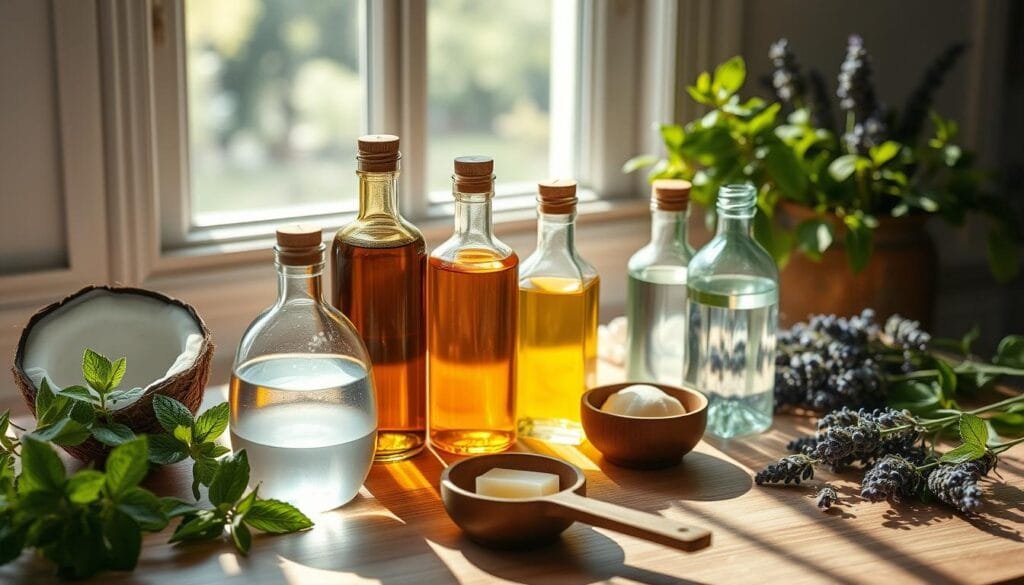
Knowing the benefits of different oils helps you make lip balms that meet your needs. Try mixing oils to find the best mix for your nourishing lip care oils.
The Role of Beeswax and Natural Wax Alternatives
Beeswax is key in making homemade herbal lip balms. It gives them structure, texture, and protection. Beeswax is made by honey bees and melts at 147 degrees Fahrenheit. This helps keep moisture in and protects the lips from harm.
Beeswax makes lip balms thicker and harder. It also has vitamin A, which helps keep the skin hydrated and regenerates cells. This is great for dry or chapped lips. Beeswax also has antioxidants that help heal and soothe the skin.
If you’re looking for vegan options, consider candelilla wax and carnauba wax. They are harder and more brittle than beeswax. Use half as much as beeswax to get a similar texture in your lip balm.
| Ingredient | Characteristics | Recommended Usage |
|---|---|---|
| Beeswax | – High melting point (147°F) – Creates a protective barrier – Contains vitamin A and antioxidants | – Up to 2% in soap recipes – Common ingredient in natural body care products |
| Candelilla Wax | – Harder and more brittle than beeswax – Vegan alternative to beeswax | – Use half the amount compared to beeswax |
| Carnauba Wax | – Harder than beeswax – Vegan alternative to beeswax – Slightly more expensive | – Use half the amount compared to beeswax |
The type of wax in lip balm affects its texture and feel. Beeswax-based balms are firmer and more protective. They let the skin breathe while keeping it moisturized. Choosing the right wax is important for making the best homemade herbal lip balm.
Best Herbs and Botanicals for Lip Balm Making
Choosing the right herbs and botanicals is key when making homemade lip balms. These natural ingredients add soothing and healing properties to the balm. They also make the balm more therapeutic. Let’s look at some top picks for lip care.
Healing Herbs for Lip Care
Herbs like calendula, chamomile, and peppermint are great for lip balms. Calendula helps with inflammation and healing, perfect for dry lips. Chamomile soothes and calms irritated lips. Peppermint cools and relieves lip discomfort.
Methods of Herbal Infusion
To use these herbs in lip balms, you need to extract their goodness. There are two main ways: cold infusion and hot infusion. Cold infusion slowly infuses herbs into oil over weeks. Hot infusion uses gentle heat to speed up the process.
After infusion, the herbal oil is mixed with ingredients like beeswax and butters. This creates a nourishing and healing lip balm.
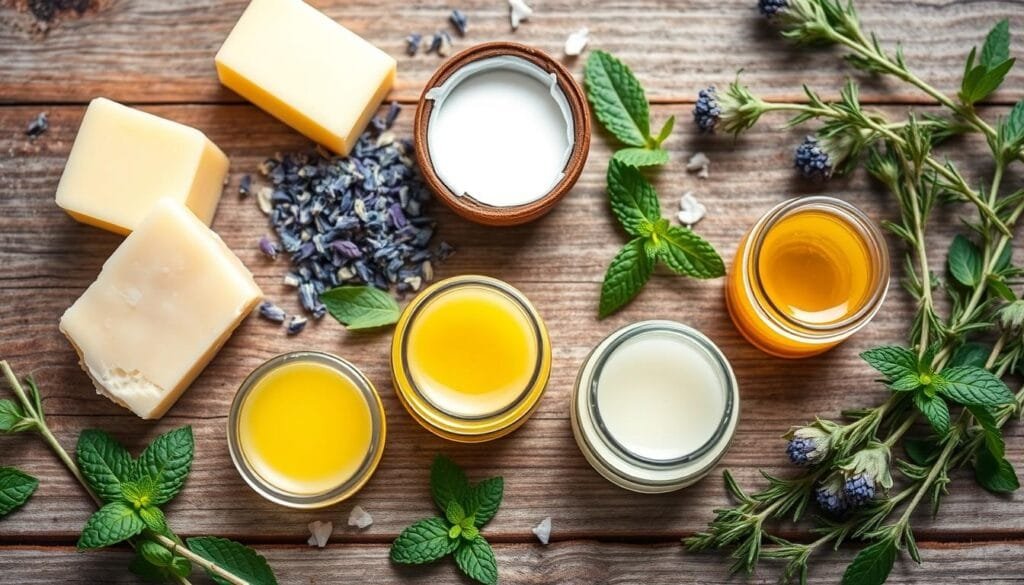
“Incorporating the therapeutic properties of herbs into homemade lip balms can elevate the overall experience and provide targeted benefits for the delicate skin of the lips.”
Step-by-Step Guide to Making Basic Herbal Lip Balm
Making your own DIY lip balm is a fun and natural way to care for your lips. Follow this easy homemade lip balm recipe to make a customized, natural lip care product at home.
- Gather your ingredients: beeswax, carrier oils (like coconut or almond oil), and any desired herbs or essential oils.
- Melt the beeswax in a double boiler or heatproof bowl set over a saucepan of simmering water, stirring occasionally until fully melted.
- Once the beeswax is melted, add your carrier oils and stir to combine. The ratio should be about 1:1:2 – 1 part beeswax, 1 part solid butter or oil, and 2 parts liquid oil.
- If you’re using herbal infusions, strain them and add the infused oil to the melted wax and butter mixture.
- Remove the mixture from heat and stir in any essential oils you’d like to use, following the guideline of up to 96 drops per 1 cup of base oil.
- Carefully pour the warm liquid into your lip balm containers, leaving a small amount of headspace to allow for expansion as it cools.
- Allow the lip balm to fully solidify at room temperature before capping the containers.
By following this simple DIY lip balm tutorial, you can create your own homemade lip balm recipe. Enjoy the benefits of natural lip care with high-quality, nourishing ingredients. Have fun trying different oil and herb combinations to find your perfect lip balm!
Essential Oils: Safe Options for Lip Balm Formulations
Adding essential oils to homemade lip balms can make them more therapeutic and fragrant. But, it’s important to follow safety rules and use the right amounts. This ensures your lip balm is both gentle and effective. Let’s look at some safe essential oils for lip care.
Recommended Essential Oil Combinations
Peppermint, lavender, and sweet orange are top picks for lip balms. They moisturize and soothe, while also smelling nice. Here are some blends you might like:
- Peppermint and Eucalyptus: A refreshing and invigorating combination for a revitalizing lip balm.
- Lavender and Frankincense: A calming and grounding blend that promotes a sense of relaxation.
- Sweet Orange and Tangerine: A citrusy and uplifting duo that can brighten your mood.
Safety Guidelines and Dilution Rates
When adding essential oils to lip balms, safety is key. Always dilute them to 1% or less to avoid irritation. For example, in a 10-gram batch, use about 10 drops of essential oil.
Some oils, like lemon and cinnamon, can make your skin more sensitive to the sun. Use them carefully, at a concentration of 1% or less.
By sticking to these guidelines and choosing the right blends, you can make lip balms that are both soothing and fragrant. This way, you protect the delicate skin on your lips.
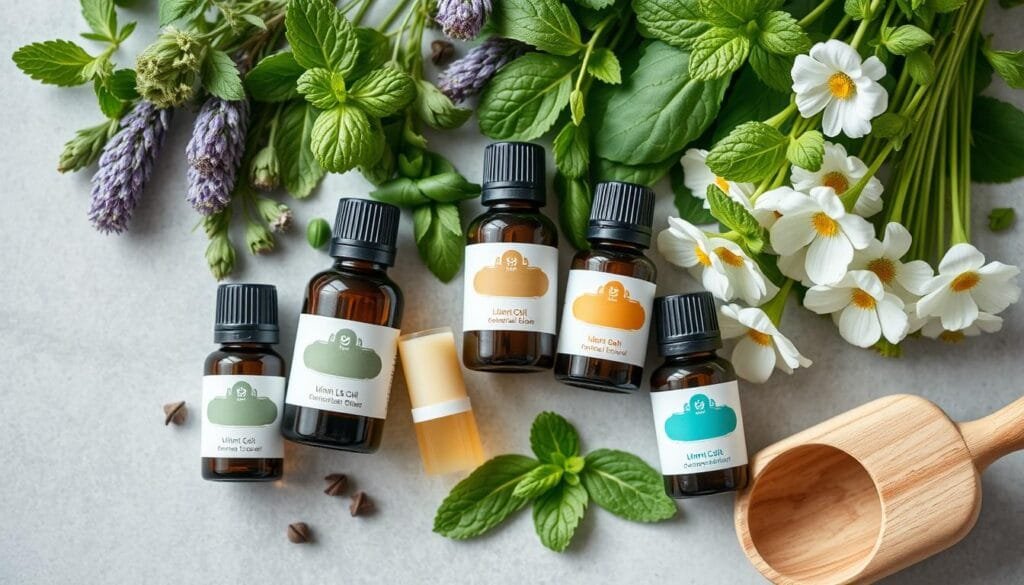
Storage Solutions and Packaging Options
There are many ways to store and package your homemade lip balms. The right container protects your ingredients and adds a personal touch. Let’s look at some top choices for your DIY lip balm.
Lip Balm Containers
Lip balm tubes are a favorite for storing lip balms. They come in sizes from 0.25 oz to 1 oz. Lip balm tins offer a sleek look and are available in packs of 72.
Eco-Friendly Packaging
Looking to be kinder to the planet? Glass jars and compostable tubes are great options. Glass jars can be reused or recycled. Compostable tubes are made from plant-based materials.
DIY Lip Balm Storage Solutions
Get creative with items like mint tins, small mason jars, and vintage compacts. Just make sure to clean and sterilize them first.
| Product | Package Details | Price |
|---|---|---|
| 1 oz clear styrene thick wall jars with white smooth plastic lined caps | Package includes 48 jars | $38.88 |
| 1/4 oz clear styrene thick wall jars with black smooth plastic lined caps | Package includes 144 jars | $70.56 |
| 0.25 oz clear glass thick wall cosmetic jars with black smooth lined caps | Sold in cases of 48 | $55.20 |
| 1 oz silver metal twist top tins with continuous thread | Package includes 72 tins | $88.56 |
| Purple glass roll-on containers with PE balls and black caps | Offered in cases of 48 | $58.08 |
The choice of containers depends on your preferences, batch size, and eco-friendliness. Try different options to find the best fit for your lip balms.
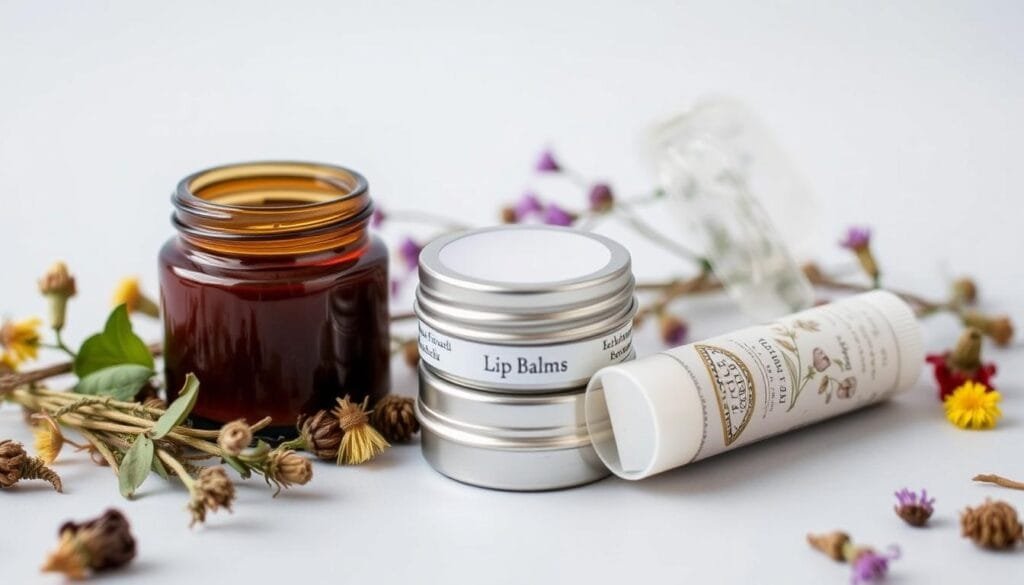
Tips for Achieving the Perfect Lip Balm Consistency
Creating the perfect lip balm is about finding the right mix of oils and waxes. If your lip balm is too hard or too soft, you can adjust it. By changing the ingredient ratio, you can make it just right for you.
To make a softer lip balm, add more liquid oils like sweet almond or coconut oil. This will give it a glossy, spreadable feel. If it’s too soft and melts, add beeswax or carnauba wax. This will make it harder and last longer on your lips.
Grainy texture can happen with certain butters like shea or cocoa. To avoid this, melt and mix the ingredients well. Then, cool it slowly in the fridge. This ensures a smooth, creamy lip balm.
